2023 to 2027 Departmental Sustainable Development Strategy

Table of contents
- Section 1: Introduction to the Departmental Sustainable Development Strategy
- Section 2: CIRNAC's Sustainable Development Vision
- Section 3: Listening to Canadians
- Section 4: Crown Indigenous Relations and Northern Affairs Canada's Commitments
- Goal 2: Zero Hunger
- Goal 4: Quality Education
- Goal 5: Gender Equality
- Goal 7: Affordable and Clean Energy
- Goal 8: Decent Work and Economic Growth
- Goal 9: Industry, Innovation, and Infrastructure
- Goal 10: Reduced Inequalities
- Goal 11: Sustainable Cities and Communities
- Goal 12: Responsible Consumption and Production
- Goal 13: Climate Action
- Goal 14: Life Below Water
- Goal 16: Peace, Justice, and Strong Institutions
- Section 5: Integrating Sustainable Development
Section 1: Introduction to the Departmental Sustainable Development Strategy
The 2022 to 2026 Federal Sustainable Development Strategy (FSDS) presents the Government of Canada's sustainable development goals and targets, as required by the Federal Sustainable Development Act. This is the first FSDS to be framed using the 17 Sustainable Development Goals (SDGs) of the United Nations 2030 Agenda and provides a balanced view of the environmental, social and economic dimensions of sustainable development.
In keeping with the purpose of the Federal Sustainable Development Act, to make decision-making related to sustainable development more transparent and accountable to Parliament, Crown-Indigenous Relations and Northern Affairs Canada (CIRNAC) supports the goals laid out in the FSDS through the activities described in this Departmental Sustainable Development Strategy (DSDS).
The Federal Sustainable Development Act also sets out seven principles that must be considered in the development of the FSDS as well as DSDS. These basic principles have been considered and incorporated into CIRNAC's DSDS.
In order to promote coordinated action on sustainable development across the Government of Canada, this departmental strategy integrates efforts to advance Canada's implementation of the 2030 Agenda National Strategy, supported by the Global Indicator Framework (GIF) and Canadian Indicator Framework (CIF) targets and indicators. The strategy also now captures SDG initiatives that fall outside the scope of the FSDS to inform the development of the Canada's Annual Report on the 2030 Agenda and the SDGs.
Section 2: CIRNAC's Sustainable Development Vision
Crown-Indigenous Relations and Northern Affairs Canada's (CIRNAC) Departmental Sustainable Development Strategy (DSDS) for 2023 to 2027 describes the department's actions in support of achieving the following 2022 to 2026 Federal Sustainable Development Strategy (FSDS) goals and the Sustainable Development Goals (SDG):

FSDS Goals
- Goal 2: Support a healthier and more sustainable food system;
- Goal 10: Advance reconciliation with Indigenous Peoples and take action on inequality;
- Goal 11: Improve access to affordable housing, clean air, transportation, parks, and green spaces, as well as cultural heritage in Canada;
- Goal 12: Reduce waste and transition to zero-emission vehicles;
- Goal 13: Take action on climate change and its impacts;
- Goal 14: Conserve and protect Canada's oceans.
SDGs
- SDG 2: Zero hunger;
- SDG 4: Quality education;
- SDG 5: Gender equality;
- SDG 7: Affordable and clean energy;
- SDG 8: Decent work and economic growth;
- SDG 9: Industry, innovation and infrastructure;
- SDG 10: Reduced inequalities;
- SDG 11: Sustainable cities and communities;
- SDG 12: Responsible consumption and production;
- SDG 13: Climate action;
- SDG 14: Life below water;
- SDG 16: Peace, justice and strong institutions.
Section 3: Listening to Canadians
As required by the Federal Sustainable Development Act, Crown-Indigenous Relations and Northern Affairs Canada (CIRNAC) has taken into account comments on the draft 2022 to 2026 Federal Sustainable Development Strategy (FSDS) made during public consultations held from March 11 to July 9, 2022 in which more than 700 comments were received from a broad range of stakeholders, including governments, Indigenous organizations, non-governmental organizations, academics, businesses, and individual Canadians in different age groups and various backgrounds. The FSDS was also shared with the appropriate committee of each House of Parliament, the Commissioner of the Environment and Sustainable Development, and the Sustainable Development Advisory Council for their review and comments.
What we heard
Across the submissions received, CIRNAC identified sustainable development priorities and issues that affect us. The key priorities include:
- Enhance food security – Canadians noted the importance of improving food security in Indigenous and Northern communities.
- Increase the use of clean energy – Canadians highlighted the importance of reducing green-house gas emissions and increasing the use of clean energy.
- Advance reconciliation with Indigenous Peoples – During engagement with representatives of First Nations, Inuit and Métis communities, you emphasised on the importance of advancing efforts towards reconciliation with Indigenous Peoples through Indigenous self-governance, sustainable management of traditional lands and waters, and intergenerational equity.
What we did
CIRNAC took the above-mentioned key priorities and issues into consideration in this Departmental Sustainable Development Strategy (DSDS). The following are examples:
To support a heathier and more sustainable food system, CIRNAC's Nutrition North Canada Program seeks to enhance Indigenous and northern food security through locally driven and co-developed food security programming, including the Harvesters Support Grant and the Community Food Programs Fund. Additionally, the Northern Arctic Environmental Sustainability program provides information on plastic pollution in Arctic and Northern Environment which informs policy and planning efforts to enhance northern food security.
CIRNAC's Northern REACHE (Responsible Energy Approach for Community Heat and Electricity) Program (also known as Wah-ila-toos) seeks to increase access to clean energy in rural, remote and Indigenous communities. It supports communities launching clean energy projects such as wind, solar, geothermal, hydro and biomass along with a new, streamlined service model for communities seeking to access resources and clean energy funding. This program is a partnership between Natural Resources Canada, CIRNAC and Indigenous Services Canada, with support from Infrastructure Canada, and Environment and Climate Change Canada.
On advancing reconciliation with Indigenous Peoples and taking action on inequality, the Government of Canada, in collaboration with First Nations, Inuit, Métis and Modern Treaty Partners, identified concrete measures necessary to ensure federal laws are consistent with the United Nations Declaration on the Rights of Indigenous Peoples, and developed an Action Plan to achieve objectives and report annually on progress. CIRNAC plays a key role in 56 Action Plan Measures, all of which contribute to reducing inequalities faced by Indigenous Peoples.
Please find more information on the FSDS public consultation and its results in the FSDS Consultation Report.
Section 4: Crown Indigenous Relations and Northern Affairs Canada's Commitments

Support a healthier and more sustainable food system
Crown-Indigenous Relations and Northern Affairs Canada (CIRNAC)'s Nutrition North Canada (NNC) program supports Goal 2. This program contributes to food security and food sovereignty in eligible isolated northern communities through strengthening local food systems, including market, country and locally produced food. The NNC program retail subsidy helps make nutritious food and some essential items more accessible and more affordable than they otherwise would be by subsidizing a list of eligible items purchased from northern retailers and southern suppliers, as well as some traditional foods purchased through a country food processor or distributor.
The Harvesters Support Grant supports increased access to traditional foods by sharing some expenses associated with traditional hunting and harvesting. The Community Food Program Fund builds on the Harvesters Support Grant to support the entirety of traditional food systems, including subsistence food production, food sharing programs and networks.
The program is a horizontal initiative and includes culturally appropriate retail and community-based nutrition education initiatives supported by Indigenous Services Canada and the Public Health Agency of Canada. Indigenous Services Canada serves residents of eligible First Nations and Inuit communities, and the Public Health Agency of Canada serves residents of isolated northern communities that fall outside the mandate of Indigenous Services Canada's First Nations and Inuit Health Branch.
Additionally, CIRNAC's Northern Contaminants Program also supports Goal 2 by improving our knowledge of plastic contaminants in the Arctic and northern environments and food security policies and infrastructure planning.
Implementation strategies supporting the goal but not a specific Federal Sustainable Departmental Strategy (FSDS) target
Implementation strategy: Enhance Indigenous and northern food security
Departmental action: Nutrition North Canada (NNC) Program
Northern and Indigenous communities are resilient to changing environments: Food sovereignty is strengthened in northern and Indigenous communities.
- Performance Indicator: Percentage of median income required to purchase sufficient nutritious food.
- Starting point: 30 percent (2021)
- Target: at least 3 percent decrease by March 2026
- Performance indicator: Percentage increase in harvesting and sharing of country foods in isolated northern communities.
- Starting point: In 2020-2021, recipients reported 5,600 hunters, 135 community hunts/harvests, and 120 community food sharing initiatives
- Target: To be confirmed in October 2023
How the departmental action contributes to the FSDS goal and target and, where applicable, to Canada's 2030 Agenda National Strategy and Sustainable Development Goals (SDGs):
Through its suite of food security programming, Nutrition North Canada (NNC) Program contributes to Goal 2 by supporting Indigenous-led food systems and increasing access to store-bought, country, and locally produced foods for residents in isolated, northern communities. The Harvesters Support Grant and Community Food Programs Fund provide Indigenous governments and organizations with flexible funding resources to increase the availability of culturally appropriate foods, support harvesters, and sustain the network of food security initiatives and programs that ensure everyone is fed. Additionally, the NNC subsidy program helps lower the cost of nutritious food in stores and provide options at no-cost to northern residents through food banks and not-for-profit.
These supports are designed and codeveloped with Indigenous partners to ensure that food security programming is locally driven and is sensitive to the realities of isolated communities.
NNC's programming aligns with the goals and objectives of the Arctic and Northern Policy Framework, reflecting Goal 1 of the Framework: "Canadian Arctic and northern Indigenous Peoples are resilient and healthy."
- Associated Canadian Indicator Framework (CIF) targets or ambitions and/or Global Indicator Framework (GIF) targets:
- CIF Ambition 2.1: Canadians have access to sufficient, affordable and nutritious food.
Departmental action: Northern and Arctic Environmental Sustainability Program – Northern Contaminants Program
Monitoring of contaminants in the North
- Performance indicator: Percentage of long-term northern and Arctic contaminant monitoring datasets maintained.
- Starting point: 88 percent
- Target: 100 percent
How the departmental action contributes to the FSDS goal and target and, where applicable, to Canada's 2030 Agenda National Strategy and Sustainable Development Goals (SDGs):
Information on plastic pollution in Arctic and northern environments collected by the Northern Contaminants Program and made available to broader assessments can inform policy and infrastructure planning in effort to enhance Indigenous and northern food security.
- Associated Canadian Indicator Framework (CIF) targets or ambitions and/or Global Indicator Framework (GIF) targets:
- CIF Ambition 2.1.1: Prevalence of food insecurity
Initiatives advancing Canada's implementation of SDG 2 – Zero Hunger
The following initiatives demonstrate how Crown-Indigenous Relations and Northern Affairs Canada (CIRNAC) programming supports the 2030 Agenda and the Sustainable Development Goals (SDGs), supplementing the information outlined above.
Planned Initiative : Nutrition North Canada (NNC) Program
The NNC Program supports SDG 2 in the following ways:
- Subsidy program for retailers and not-for-profit entities (e.g. food banks);
- Harvesters Support Grant and Community Food Programs Fund;
- Nutrition Education Initiatives;
- Food Security Research Grant.
The NNC Subsidy Program helps lower the cost of nutritious food and other essential items in 123 isolated communities to make it more affordable and accessible as it would otherwise be without the subsidy. In 2022, the NNC Program extended the subsidy to not for-profit entities to provide eligible communities with food at no cost. The newly launched research program is Indigenous-led and seeks to fill in critical data gaps to drive policy development and provide critical insights on how to better position the program to address Northerners' needs.
Complementing access to market foods, in 2020 the program launched the Harvesters Support Grant to support hunting and harvesting related activities in eligible communities in order to strengthen local food systems and support cultural restoration and revitalization. Through Budget 2021 investments, the NNC Program added the Community Food Programs Fund to support local food security programs such as bulk buying, school and elder meal programs, among others.
NNC's programming aligns with the goals and objectives of the Arctic and Northern Policy Framework, reflecting Goal 1 of the Framework "Canada Arctic and northern Indigenous Peoples are resilient and healthy." The Framework sets out to achieve its objectives by 2030, informed by the United Nations' 2030 Sustainable Development Goals. Consequently, the NNC Program is working towards the Framework's Goal 1 of ending poverty and eradicating hunger by 2030.
Relevant targets or ambitions
Associated Canadian Indicator Framework (CIF) targets or ambitions and/or Global Indicator Framework (GIF) targets:
- CIF Ambition: 2.1 Canadians have access to sufficient, affordable and nutritious food.
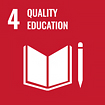
Promote knowledge and skills for sustainable development
The Arctic and Northern Policy Framework was launched in 2019 to guide Government of Canada priorities, activities and investments in the region to 2030 and beyond, with various goals and objectives aimed at expanding access to post-secondary education in the north. In particular, Goal 1 of the Framework aims to support resilient and healthy northern and Indigenous Peoples and is advanced through the following objectives:
- Create an environment in which children will thrive, through a focus on education, culture, health and well-being;
- Close the gaps in education outcomes; and
- Provide ongoing learning and skills development opportunities, including Indigenous-based knowledge and skills.
To support the implementation of the Framework, federal investments have been made towards improving post-secondary attainment, including funding to establish a Task Force on Northern Post-Secondary Education to make recommendations on establishing a robust system of post-secondary education in the North. Task Force members were appointed in October 2020, all of whom were nominated by northern governments, organizations and partners to the Framework. The Task Force's final report, A Shared Responsibility: Northern Voices, Northern Solutions — Report of the Task Force on Northern Post-Secondary Education, released in March 2022, demonstrated that northern students encounter a wide variety of challenges in accessing post-secondary education that span across ministerial portfolios and levels of government, including limited access to housing, child care, reliable high-speed internet connection, and adequate student financing, among others.
Initiatives advancing Canada's implementation of SDG 4 – Quality Education
The following initiatives demonstrate how Crown-Indigenous Relations and Northern Affairs Canada (CIRNAC) programming supports the 2030 Agenda and the Sustainable Development Goals (SDGs), supplementing the information outlined above.
Planned initiative: Implementation of the Arctic and Northern Policy Framework
To support the implementation of the Arctic and Northern Policy Framework (ANPF), the following Crown-Indigenous Relations and Northern Affairs Canada (CIRNAC) investments have been made towards improving accessibility of post-secondary education for Northerners:
- $1 million to establish a Task Force on Northern Post-Secondary Education to make recommendations on establishing a robust system of post-secondary education in the North (Budget 2019)
- $26 million over five years towards the construction of a new science building at Yukon University (Budget 2019)
- $12.97 million over five years to the Dechinta Centre for Research and Learning to support culturally-appropriate and land-based learning and research activities (Budget 2019)
- $8 million to support the transformation of Aurora College into a polytechnic university (Budget 2021).
Reconciliation is both a goal of the ANPF and a guiding principle that runs through all of its other goals and objectives. CIRNAC collaborates with all Framework partners to support the social and political self-determination that underpins reconciliation, and to fully implement the reconciliation-related objectives of the Framework. CIRNAC's investments towards northern post-secondary education reflect this approach.
The Dechinta Centre for Research and Learning initiative involves programming that is rooted in Indigenous practices, culture, and values.
Yukon University has a commitment to advancing reconciliation in its strategic plan for 2022-2027 and as part of achieving that, it will centre Indigenous Knowledge in its curricula and teaching, its leadership styles and governance, as well as working with First Nations, building an Indigenous student centre, and addressing social injustices.
Support for the transformation of Aurora College is anticipated to have significant positive benefits to Indigenous Peoples as a portion of funding will go toward community engagement that will inform programming and campus locations.
The Task Force on Northern Post-Secondary Education's first Call to Action involves the recognition and use of Indigenous ways of knowing, doing, and being and is itself a foundational Call to Action that is further elaborated in several of the other Calls to Action.
Relevant targets or ambitions
Associated Canadian Indicator Framework (CIF) targets or ambitions and/or Global Indicator Framework (GIF) targets
- CIF Target: 4.2 Canadians have access to inclusive and quality education throughout their lives. This target tracks the post-secondary education attainment rate but has no specific target.
- GIF Goal 4: Ensure inclusive and equitable quality education and promotes lifelong learning opportunities for all.
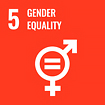
Champion gender equality
Crown-Indigenous Relations and Northern Affairs Canada's (CIRNAC) various initiatives contribute to Goal 5. The department has established a Gender-based Analysis Plus (GBA Plus) Centre of Expertise and has developed an Indigenous culturally competent GBA Plus approach. This ensures consistency across CIRNAC programs, policies and initiatives to acknowledge the unique historical, cultural, political, socio-economic realities of First Nations, Inuit, and Métis peoples.
Through the implementation of the three whole-of government relationship agreements with National Indigenous Women's Organizations (NIWOs), CIRNAC is advancing Gender Equality by ensuring the inclusion of an intersectional, gender-based analysis lens that is specific to their reality.
Finally, through funding agreements to grassroots and regional Indigenous women's and 2SLGBTQI+Footnote 1 organizations, CIRNAC ensures Gender Equality in leadership roles and stable funding.
Initiatives advancing Canada's implementation of SDG 5 – Gender Equality
The following initiatives demonstrate how Crown-Indigenous Relations and Northern Affairs Canada's (CIRNAC) programming supports the 2030 Agenda and the Sustainable Development Goals (SDGs), supplementing the information outlined above.
Planned initiative: Gender-based Analysis Plus (GBA Plus) – CIRNAC GBA Plus Centre of Expertise
The Crown-Indigenous Relations and Northern Affairs Canada's (CIRNAC) Gender-based Analysis Plus (GBA Plus) Centre of Expertise facilitates the transfer of GBA Plus knowledge throughout the department and supports Indigenous culturally competent GBA Plus implementation across the federal government through established partnerships with National Indigenous Women's Organizations. "Indigenous culturally competent GBA Plus" refers to CIRNAC's approach to GBA Plus that is influenced by Indigenous partner's unique GBA Plus frameworks that are distinctions-based, acknowledges the unique historical, cultural, political, socio-economic realities of First Nations, Inuit, and Métis peoples that understands colonialism and racism, is strengths-based, inclusive of the gender continuum and values Indigenous Knowledge. New tools and resources are being funded through three five-year projects with each the three national organizations providing $1.1 million in targeted GBA Plus capacity funding from Budget 2021.
Relevant targets or ambitions
Support Canada's capacity for GBA Plus that enables consistent application of robust intersectional and Indigenous culturally competent GBA Plus to meaningfully inform decision making through the use of toolkits developed by National Indigenous Women's and 2SLGBTQI+ Organizations. This will also advance Canada's commitments for reconciliation and commitments to intersectionality, anti-racism, and gender equality.
Associated Canadian Indicator Framework (CIF) targets or ambitions and/or Global Indicator Framework (GIF) targets
- CIF Ambition 5.1: Eliminate gender-based violence and harassment.
- GIF Target 5.1: End all forms of discrimination against all women and girls everywhere.
- GIF Target 5C: Adopt and strengthen sound policies and enforceable legislation for the promotion of gender equality and the empowerment of all women and girls at all levels.
Planned initiative: Whole-of-Government Relationship Agreements with National Indigenous Women's Organizations
The Department is responsible for overseeing and reporting on the going implementation of three whole-of-government relationship agreements with the three National Indigenous Women's Organizations (NIWOs): Pauktuutit Inuit Women of Canada (Memorandum of Understanding June 2017); the Native Women's Association of Canada (Accord February 2019); and Les Femmes Michif Otipemisiwak (Declaration August 2021).
The relationship agreements support advancing SDG 5 through a collaborative and coordinated horizontal approach with each organization to identify and work on joint priorities ensuring the inclusion of an intersectional, gender-based analysis lens in policy, programs and legislation that directly impact First Nation, Métis and Inuit women, girls and gender-diverse peoples experiences, including environment and climate change.
Relevant targets or ambitions
The implementation of the three whole-of government relationship agreements with National Indigenous Women's Organizations contributes to reconciliation.
Associated Canadian Indicator Framework (CIF) targets or ambitions and/or Global Indicator Framework (GIF) targets
- CIF Ambition 5.2: Gender equality in leadership roles and at all levels of decision making.
Planned initiative: Supporting Indigenous Women's and 2SLGBTQI+ Organizations Program
Through Budget 2021, the Department provides $36.3 million over five years and $8.6 million ongoing through longer-term multi-year project funding agreements to grassroots and regional Indigenous women's and 2SLGBTQI+ organizations. The program Supporting Indigenous Women's and 2SLGBTQI+ Organizations contributes to the capacity of organizations to engage with grassroots communities to bring forward the unique needs and perspectives to the Government to inform priorities and policies, programs and legislation.
A total of 41 projects with over 26 organizations across the country were funded in fiscal years 2021-22 and 2022-23 providing approximately $11.5 million in project funding. A new call for proposals will be launched in Fall 2023 for new projects beginning in fiscal year 2024-25.
Relevant targets or ambitions
This funding program contributes to advancing reconciliation by providing longer term, stable funding to enhance self-determination.
Associated Canadian Indicator Framework (CIF) targets or ambitions and/or Global Indicator Framework (GIF) targets
- CIF Ambition 5.2: Gender equality in leadership roles and at all levels of decision making.
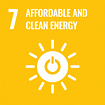
Increase Canadian's access to clean energy
Crown-Indigenous Relations and Northern Affairs Canada's (CIRNAC) Northern Responsible Energy Approach for Community Heat and Electricity Program, also called the Northern REACHE Program, contributes to Goal 7. This program contributes to increasing the resilience of northern and Indigenous communities by supporting the integration of climate information in decisions, reducing reliance on diesel and lowering greenhouse gas emissions. The program takes a collaborative and capacity building approach, working with provincial and territorial governments, communities and Indigenous organizations to first identify priorities and then provide direct funding support for territorial governments and Indigenous communities to: monitor, collect and develop climate data and information; to conduct assessments to identify the impacts of climate change that affect them; and plan to address these risks. Funding is also provided to support northern communities, governments, and organizations to plan and construct renewable energy and energy efficiency projects.
Implementation strategies supporting the goal but not a specific Federal Sustainable Departmental Strategy (FSDS) target
Implementation strategy: Streamline federal investments to advance clean, reliable energy in rural, remote, and Indigenous communities
Departmental action: Northern REACHE Program
Working to reduce northern communities' reliance on diesel for heating and electricity by increasing the use of local renewable energy sources and energy efficiency while also supporting the feasibility and planning stages of hydroelectricity and grid interconnection projects in the North.
- Performance indicator: Litres of diesel avoided with clean energy
- Starting point: 830,000 litres avoided in 2022-2023
- Target: 7 million litres by 2030
How the departmental action contributes to the FSDS goal and target and, where applicable, to Canada's 2030 Agenda National Strategy and Sustainable Development Goals (SDGs):
FSDS Target theme: Renewable and non-emitting sources of electricity.
Crown-Indigenous Relations and Northern Affairs Canada (CIRNAC)'s Northern REACHE Program supports clean energy initiatives in northern, Indigenous and remote communities with the aim of reducing reliance on diesel. Northern REACHE Program is part of Wah-ila-toos, a new interdepartmental single-window initiative designed to streamline access to federal clean energy funding and resources for remote and Indigenous communities. This work is aligned with FSDS targets of achieving greenhouse gas emission reductions as well as SDG 7 by improving access to clean energy.
- Associated Canadian Indicator Framework (CIF) targets or ambitions and/or Global Indicator Framework (GIF) targets:
- CIF Ambition 13.1.1: By 2030, reduce Canada's total greenhouse gas emissions by 40 to 45 percent, relative to 200 emission levels. By 2050, achieve economy-wide net-zero greenhouse gas emissions.
- GIF Target 7.2: By 2030, increase substantially the share of renewable energy in the global energy mix.
- GIF Target 7.3: By 2030, double the global rate of improvement in energy efficiency.
- GIF Target 13.3: Improve education, awareness-raising and human and institutional capacity on climate change mitigation, adaptation, impact reduction and early warning
Initiatives advancing Canada's implementation of SDG 7 – Affordable and Clean Energy
The following initiatives demonstrate how Crown-Indigenous Relations and Northern Affairs Canada (CIRNAC) programming supports the 2030 Agenda and the Sustainable Development Goals (SDGs), supplementing the information outlined above.
Planned initiative: Northern REACHE Program
Relevant targets or ambitions
Associated Canadian Indicator Framework (CIF) targets or ambitions and/or Global Indicator Framework (GIF) targets
- CIF Goal 7: Ensure access to affordable, reliable, sustainable and modern energy for all.
- CIF Ambition 7.2: Canadians reduce their energy consumption.
- CIF Ambition 7.3: Canadians have access to clean and renewable energy.
- CIF Goal 13: Take urgent action to combat climate change and its impacts.
- CIF Ambition 13.2: Canadians are well-equipped and resilient to face the effects of climate change.
- GIF Goal 7: Ensure access to affordable, reliable, sustainable and modern energy for all.
- GIF Target 7.2: By 2030, increase substantially the share of renewable energy in the global energy mix.
- GIF Target 7.3: By 2030, double the global rate of improvement in energy efficiency.
- GIF Goal 13: Take urgent action to combat climate change and its impacts.
- GIF Target 13.3: Improve education, awareness-raising and human and institutional capacity on climate change mitigation, adaptation, impact reduction and early warning.
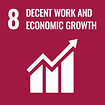
Encourage inclusive and sustainable economic growth in Canada
Crown-Indigenous Relations and Northern Affairs Canada's (CIRNAC) Framework Agreement on First Nation Land Management contributes to Goal 8. The implementation of the Framework Agreement on First Nation Land Management contributes to the development of strong First Nations governance and capacity and provides them with options to exercise jurisdiction, control and management over their own affairs and resources and pursue economic development activities. The department and Indigenous institutions are working together with First Nations to develop the tools they need to drive local economic development, empower their communities, and promote prosperity.
Initiatives advancing Canada's implementation of SDG 8 – Decent Work and Economic Growth
The following initiatives demonstrate how Crown-Indigenous Relations and Northern Affairs Canada (CIRNAC) programming supports the 2030 Agenda and the Sustainable Development Goals (SDGs), supplementing the information outlined above.
Planned initiative: Framework Agreement on First Nation Land Management
Through the implementation of the Framework Agreement on First Nation Land Management, enhancements to the First Nations Fiscal Management Act, and the redesign of the Additions to Reserve policy and process, CIRNAC creates strong Indigenous-led partnerships which foster self-sustainability and economic prosperity." This initiative also contributes to Goal 10 – Reduced advance reconciliation with Indigenous Peoples and take action on inequality.
Additions to reserve support First Nations in reclaiming their traditional lands and advancing their vision of self-determination, economic development, community wellbeing, and build a more prosperous future for generations to come. Additions to reserve can provide greater opportunities for growth and prosperity and demonstrate a new way of thinking and doing business that benefits all. A First Nations-led National Land Registry will provide increased certainty in land transactions. A modern accurate and sustainable land registry is an important tool in land administration that would:
- Lead to greater outside investments on First Nation lands;
- Support community development and land use planning;
- Add to economic development and growth in First Nations communities through increased land market efficiency, access to credit, tenure security and competitiveness.
Relevant targets or ambitions
Associated Canadian Indicator Framework (CIF) targets or ambitions and/or Global Indicator Framework (GIF) targets
- CIF and GIF Goal 8: Promote sustained, inclusive and sustainable economic growth, full and productive employment and decent work for all.
- CIF Ambition 8.5 and 8.6: Canadians contribute to and benefit from sustainable economic growth.
- GIF Target 8.3: Promote development-oriented policies that support productive activities, decent job creation, entrepreneurship, creativity and innovation, and encourage the formalization and growth of micro-, small- and medium-sized enterprises, including through access to financial services.
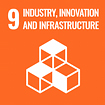
Foster innovation and green infrastructure in Canada
Crown-Indigenous Relations and Northern Affairs Canada (CIRNAC) contributes to Goal 9 through its Indigenous Community Infrastructure Fund. This program aims to close the infrastructure gap in Indigenous communities by supporting and investing in the immediate infrastructure needs of Indigenous communities for ongoing, new and shovel-ready projects.
Initiatives advancing Canada's implementation of SDG 9 – Industry, Innovation and Infrastructure
The following initiatives demonstrate how Crown-Indigenous Relations and Northern Affairs Canada (CIRNAC) programming supports the 2030 Agenda and the Sustainable Development Goals (SDGs), supplementing the information outlined above.
Planned initiative: Indigenous Community Infrastructure Fund
The Indigenous Community Infrastructure Fund supports and invests in the immediate infrastructure needs of Indigenous communities for ongoing, new and shovel-ready projects. The funding is to be used to support infrastructure and housing initiatives as determined by the funding recipient.
Relevant targets or ambitions
- $18 million over four years for First Nations off-reserve without Modern Treaties or Self Government Agreements in the Northwest Territories.
- Budget 2021: $517.8 million over four years is being delivered to the four Inuit Treaty Organizations to support Inuit-led infrastructure projects.
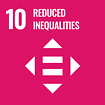
Advance reconciliation with Indigenous Peoples and take action on inequality
Crown-Indigenous Relations and Northern Affairs Canada's (CIRNAC) key role in the 56 Action Plan Measures and the establishment of First Nations Fiscal Management Act contributes to Goal 10. It supports Canada's commitment to the negotiation of treaties, self-government agreements and other constructive arrangements to reconcile Indigenous rights with the sovereignty of the Crown. The intent is to co-create an enabling environment where Indigenous Peoples can exercise their right of self-determination and improve the political, cultural and socio-economic conditions within their communities. The department, in collaboration with First Nations-led institutions (First Nations Tax Commission, First Nations Financial Management Board, and First Nations Finance Authority) is also providing legislative and institutional frameworks for First Nation's jurisdiction over local taxation and financial management, as well as provides First Nations with access to long-term and affordable financing, which contributes to reducing inequalities. CIRNAC is also involved in the Inuit-Crown Partnership Committee and provides funding to specific Indigenous groups to advance reconciliation. Through the Canada-Congress of Aboriginal Peoples Political Accord, CIRNAC is ensuring Métis and Non-Status Indians are included in the development of policies and programs which contribute to reducing inequalities. By providing Indigenous women, girls and 2SLGBTQI+ organizations funding, CIRNAC ensures their knowledge and perspectives are considered to inform policies, programs, and legislation that impacts their lives. Finally, by implementing the three whole-of-government relationship agreements with National Indigenous Women's Organizations, the department aims to reduce intersectional inequality based on gender identity, race, ethnicity, origin, regional, and economic status.
Target theme: Advancing reconciliation with First Nations, Inuit, and Métis communities
Target: Between 2023 and 2026, and every year on an ongoing basis, develop and table annual progress reports on implementing the United Nations Declaration on the Rights of Indigenous Peoples Act (Minister of Justice and Attorney General of Canada).
Implementation strategy: Implement the United Nations Declaration on the Rights of Indigenous Peoples Act
Departmental action: United Nations Declaration Secretariat
Formal establishment of a Secretariat in Crown-Indigenous Relations and Northern Affairs Canada (CIRNAC) to lead departmental coordination around the implementation of the United Nations Declaration on the Rights of Indigenous Peoples Act.
- Performance indicator: Number of fulltime equivalents (FTEs) in the United Nations Declaration Secretariat
- Starting point: 0 FTE - New initiative started April 2023
- Target: 15 FTEs by March 31, 2024
How the departmental action contributes to the FSDS goal and target and, where applicable, to Canada's 2030 Agenda National Strategy and Sustainable Development Goals (SDGs):
The establishment of the Secretariat will support departmental implementation of the United Nations Declaration on the Rights of Indigenous Peoples Act. Departmental implementation of the United Nations Declaration on the Rights of Indigenous Peoples Act will address injustices, combat prejudice and seek to eliminate all forms of violence, racism and discrimination, including systemic racism and discrimination.
- Associated Canadian Indicator Framework (CIF) targets or ambitions and/or Global Indicator Framework (GIF) targets
- CIF Ambition 10.1: Canadians live free of discrimination and inequalities are reduced.
- GIF Target 10.2: By 2030, empower and promote the social, economic and political inclusion of all, irrespective of age, sex, disability, race, ethnicity, origin, religion or economic or other status.
- GIF Target 10.3: Ensure equal opportunity and reduce inequalities of outcomes, including by eliminating discriminatory laws, policies and practices and promoting appropriate legislation, policies and action in this regard.
- GIF Target 10.4: Adopt policies, especially fiscal, wage and social protection policies, and progressively achieve greater equality.
Initiatives advancing Canada's implementation of SDG 10 – Reduced Inequalities
The following initiatives demonstrate how Crown-Indigenous Relations and Northern Affairs Canada (CIRNAC) programming supports the 2030 Agenda and the Sustainable Development Goals (SDGs), supplementing the information outlined above.
Planned initiative: Implement the United Nations Declaration on the Rights of Indigenous Peoples
On June 21, 2021, the United Nations Declaration on the Rights of Indigenous Peoples Act received Royal Assent. In keeping with the United Nations Declaration on the Rights of Indigenous Peoples Act, the Government of Canada collaborated with First Nations, Inuit, Métis and Modern Treaty Partners, to identify the measures necessary to ensure federal laws are consistent with the United Nations Declaration, to develop an Action Plan to achieve its objectives, which was released on June 21, 2023 and to report annually on progress.
The Action Plan contains concrete measures to address injustices, combat prejudice and eliminate all forms of violence, racism and discrimination, including systemic racism and discrimination. CIRNAC plays a key role in 56 Action Plan measures, all of which contribute to reducing inequalities faced by Indigenous Peoples.
Canada will continue to work in consultation and cooperation with Indigenous Peoples in the implementation of the Action Plan from 2023 to 2028, and other obligations of the United Nations Declaration on the Rights of Indigenous Peoples Act.
Relevant targets or ambitions
Associated Canadian Indicator Framework (CIF) targets or ambitions and/or Global Indicator Framework (GIF) targets
- CIF Ambition 10.1: Canadians live free of discrimination and inequalities are reduced.
- GIF Target 10.2: By 2030, empower and promote the social, economic and political inclusion of all, irrespective of age, sex, disability, race, ethnicity, origin, religion or economic or other status.
- GIF Target 10.3: Ensure equal opportunity and reduce inequalities of outcome, including by eliminating discriminatory laws, policies and practices and promoting appropriate legislation, policies and action in this regard.
- GIF Target 10.4: Adopt policies, especially fiscal, wage and social protection policies, and progressively achieve greater equality.
Planned initiative: First Nations Fiscal Management Act
The First Nations Fiscal Management Act (FNFMA), its institutions and the on-going enhancements to the regime are contributing towards addressing historical barriers and gaps experienced by Indigenous Peoples, including jurisdictional, capacity, and access to capital gaps, and they are contributing to the Sustainable Development Goal (SDG) 10 to reduce inequality.
The FNFMA regime plays an important role to advance self-determination and economic reconciliation in First Nations communities. Established in 2006, the FNFMA is an optional, First Nations-led alternative to the Indian Act that provides First Nations with a legislative and institutional framework through which to assert jurisdiction in the areas of financial management, property taxation, and access to capital markets. With the support of the First Nations Financial Management Board, the First Nations Tax Commission, and the First Nations Finance Authority, the regime helps First Nations strengthen their financial administration capacity and systems to establish a strong foundation of good governance in their communities.
Recent legislative amendments to the FNFMA (Bill C-45, June 2023) have modernized and broadened the mandate of the First Nations Financial Management Board and the First Nations Tax Commission to empower them to support non scheduled First Nations and Indigenous organizations. Those amendments also formally established the First Nations Infrastructure Institute, which can assist interested First Nations and their organizations with the development and management of infrastructure throughout its lifecycle to improve the sustainability of infrastructure assets on their lands, and to support access to economic development opportunities.
Crown-Indigenous Relations and Northern Affairs Canada (CIRNAC) is also currently engaging with the First Nations Tax Commission, the First Nations Financial Management Board, the First Nations Finance Authority, the Province of British Columbia, and interested self-governing First Nations on regulations that would allow self-governing and treaty First Nations to access financing through the First Nations Finance Authority for infrastructure and economic development.
Building on this important work, CIRNAC will continue to collaborate with the First Nations Financial Management Board, the First Nations Tax Commission, the First Nations Finance Authority, and the First Nations Infrastructure Institute on priorities relating to the FNFMA to further enhance the regime and advance reconciliation with Indigenous Peoples.
The department will consult with First Nations and other impacted Indigenous groups to support the co-development of alternatives to Indian Act registration and membership. This work supports increased self-determination for First Nations in the determination of their own people and away from government controlled Indian Act registration which is viewed by many First Nation people as a significant contributor to the racialization of their peoples. Indigenous Peoples are the foundation of the Crown-Indigenous relationship and moving forward with this key element of self-determination and reconciliation in line with the United Nations Declaration on the Rights of Indigenous Peoples will contribute greatly in reducing racialization of First Nation People and increase self-determination.
Relevant targets or ambitions
Associated Canadian Indicator Framework (CIF) targets or ambitions and/or Global Indicator Framework (GIF) targets
- CIF Ambition 10.1: Canadians live free of discrimination and inequalities are reduced.
- GIF Target 10.2: By 2030, empower and promote the social, economic and political inclusion of all, irrespective of age, sex, disability, race, ethnicity, origin, religion or economic or other status.
Planned initiative: Inuit-Crown Partnership Committee
Through the Inuit-Crown Partnership Committee, Crown-Indigenous Relations and Northern Affairs Canada (CIRNAC) provides direct funding to Inuit Tapiriit Kanatami and Inuit Treaty Organizations to support joint priority areas in order to advance reconciliation.
Relevant targets or ambitions
For 2022-2023, CIRNAC provided $2.4 million to support the ongoing work in 15 priority areas to advance reconciliation and self-determination.
Planned initiative: Canada-Congress of Aboriginal Peoples Political Accord
Implement Canada-Congress of Aboriginal Peoples Political Accord to support the inclusion of MétThe Department is responsible for overseeing and reporting on theis and Non-Status Indian (MNSI) perspectives in the development of federal policies and programs.
Relevant targets or ambitions
- The Accord supports the implementation of the United Nations Declaration on the Rights of Indigenous Peoples Act Action Plan Measure 90.
- Congress of Aboriginal Peoples (CAP)-Canada joint priority area working groups result in improved relationships, knowledge transfer, and gaps analysis on issues of importance to the Congress and their constituents (Métis and Non-Status Indians and urban Indigenous Peoples).
- Jointly developed progress reports allow for Métis and Non-Status Indian perspectives to be considered in the development of federal policies and programs.
Planned initiative: Supporting Indigenous Women's and 2SLGBTQI+ Organizations Program
Implementation of dedicated Budget 2021 funding, supporting Indigenous Women's and 2SLGBTQI+ Organizations, of $36.3 million over five years and $8.6 million ongoing. This program provides Indigenous women's and 2SLGBTQI+ organizations with project funding to engage with grassroots communities and government to bring forward the unique needs, interests, and perspectives of Indigenous women and 2SLGBTQI+ peoples to inform policies, programs, and legislation that impacts their lives. Projects funded under this initiative speak in part, to addressing the Missing and Murdered Indigenous Women, Girls, and 2SLGBTQI+ Call for Justice 1.8, and to inform the Government of Canada on improving the social, health, and economic outcomes of Indigenous women and Two-Spirit and Indigenous LGBTQI+ people.
Relevant targets or ambitions
- Implementation of Gender-based Analysis Plus as a means of advancing gender and intersectional equality, directly supporting the "leave no one behind" principles.
- Reconciliation by providing longer term, stable funding to enhance self-determination.
- Implementation of the United Nations Declaration on the Rights of Indigenous Peoples Act Action Plan Measure 70.
Associated Canadian Indicator Framework (CIF) targets or ambitions and/or Global Indicator Framework (GIF) targets
- CIF Ambition 10.2: Canadians live free of discrimination and inequalities are reduced.
Planned initiative: Whole-of-Government Relationship Agreements with National Indigenous Women's Organizations
Implementation of the three whole-of-government relationship agreements with National Indigenous Women's Organizations (NIWOs) aim to reduce intersectional inequality based on gender identity, race, ethnicity, origin, regional, and economic status. These agreements formalize a relationship between Canada and the organizations to work on joint priorities to ensure the inclusion of an intersectional, Gender-based Analysis lens in policy, programs, and legislation that directly impact First Nations, Métis, and Inuit women, girls, and gender-diverse peoples experiences, including environment and climate change. Relationship agreements include: Canada – Pauktuutit Inuit Women Memorandum of Understanding (signed in June 2017); Canada – Native Women's Association of Canada Accord (signed in February 2019); and Canada – Les Femmes Michif Otipemisiwak Declaration (signed in August 2021).
Relevant targets or ambitions
The whole-of-government relationship agreements with NIWOs contributes to advancing:
- The "leave no one behind" principles;
- Reconciliation by providing longer term, stable funding to enhance self- determination;
- Implementation of the United Nations Declaration on the Rights of Indigenous Peoples Act Action Plan Measure 69;
- Implementation of Indigenous culturally competent Gender-based Analysis Plus as a means of advancing gender and intersectional equality;
- Reconciliation with Indigenous Peoples through implementation of the United Nations Declaration on the Rights of Indigenous Peoples, Articles 21.2 and 22.1 by working to mitigate the impact of gender differences and considerations for specific groups. Article 22.1 indicates that: particular attention shall be paid to the rights and special needs of Indigenous elders, women, youth, children, and persons with disabilities.
Associated Canadian Indicator Framework (CIF) targets or ambitions and/or Global Indicator Framework (GIF) targets
- CIF Ambition 10.2: Canadians live free of discrimination and inequalities are reduced.
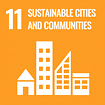
Improve access to affordable housing, clean air, transportation, parks and green spaces, as well as cultural heritage in Canada
By providing funding to Territorial Governments, Northwest Territories Métis and Inuit Treaty Organizations, Crown-Indigenous Relations and Northern Affairs Canada (CIRNAC) is directly addressing the critical needs for housing and infrastructure within Indigenous communities, and therefore contributes to Goal 11.
Target theme: Affordable Housing and Homelessness
Target: By 2028, reduce or eliminate housing need for 530,000 households (Minister of Housing and Diversity and Inclusion)
Implementation strategy: Support affordable housing and related infrastructure for Indigenous communities in the North
Departmental action: Northern and Arctic Governance and Partnerships Program
Crown-Indigenous Relations and Northern Affairs Canada (CIRNAC) provides funding to Territorial and Indigenous partners in relation to affordable housing and related infrastructure for Indigenous communities in the North.
- Performance indicator: Specific to Indigenous and territorial partners.
- Starting point: Specific to Indigenous and territorial partners
- Target: Specific to Indigenous and territorial partners.
How the departmental action contributes to the FSDS goal and target and, where applicable, to Canada's 2030 Agenda National Strategy and Sustainable Development Goals (SDGs):
The funding provided territorial and Indigenous partners in relation to housing and infrastructure contributes to the Federal sustainable Development Strategy (FSDS) Goal 11.
Initiatives advancing Canada's implementation of SDG 11 – Sustainable Cities and Communities
The following initiatives demonstrate how Crown-Indigenous Relations and Northern Affairs Canada (CIRNAC) programming supports the 2030 Agenda and the Sustainable Development Goals (SDGs), supplementing the information outlined above.
Planned initiative: Funding to Territorial Governments
CIRNAC provides direct funding to Territorial Governments to address critical housing and infrastructure needs.
Relevant targets or ambitions
Budget 2022: $150 million over two-years starting in 2022-23 to address critical housing and infrastructure needs.
Planned initiative: Funding for Northwest Territories Métis
Relevant targets or ambitions
Budget 2022: $34 million over seven years to support housing and infrastructure needs.
Planned initiative: Distinction-based investments to Inuit Treaty Organizations
CIRNAC is providing distinctions-based investments to Inuit Treaty Organizations to help address critical housing and infrastructure needs.
Relevant targets or ambitions
Budget 2022: $845 million over seven years is being delivered to the four Inuit Treaty Organizations to support Inuit-led housing delivery to help address housing needs and meet 2030 Indigenous housing commitments in Inuit Nunangat.
Budget 2021: $517.8 million over four years is being delivered to the four Inuit Treaty Organizations to support Inuit-led infrastructure projects.
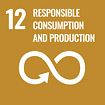
Reduce waste and transition to zero-emission vehicles
Crown-Indigenous Relations and Northern Affairs Canada (CIRNAC) contributes to Goal 12 through the remediation of its contaminated sites and the monitoring of plastics in the North. The Northern Contaminated Sites Program contributes to the sustainable management of northern lands and resources. The program ensures that contaminated sites in the territories are managed to reduce risk to human and environmental health and safety for all Northerners. Managing contaminated sites refers to site assessments, care and maintenance, remediation and monitoring activities. The Northern Contaminants Program ensures efficient and effective monitoring systems in the North by coordinating, generating and managing scientific and environmental data and by publishing results and data. Providing scientific data can help research innovative solutions.
Implementation strategies supporting the goal but not a specific Federal Sustainable Departmental Strategy (FSDS) target
Implementation strategy: Remediate high-priority contaminated sites
Departmental action: Northern Contaminated Sites Program
Manage the Department's portfolio of contaminated sites under the Federal Contaminated Sites Action plan and the Northern Abandoned Mine Reclamation Program.
- Performance indicator: Percentage of high-priority contaminated sites that are actively managed.
- Starting point: 92 percent
- Target: 80 percent
How the departmental action contributes to the FSDS goal and target and, where applicable, to Canada's 2030 Agenda National Strategy and Sustainable Development Goals (SDGs):
Actions that reduce the number of contaminated sites will help reduce the risk of contaminants being released to air, water and soil and will allow the department to reduce or eliminate risks to human health and the environment.
Actively managed sites include sites undergoing planning, remediation or long-term monitoring activities. In a given year, the Northern Contaminated Sites Program is able to actively manage the majority of Crown-Indigenous Relations and Northern Affairs Canada (CIRNAC)'s high priority contaminated sites.
- Associated Canadian Indicator Framework (CIF) targets or ambitions and/or Global Indicator Framework (GIF) targets
- GIF Target 12.4: By 2020. Achieve the environmentally sound management of chemicals and all wastes throughout their life cycle, in accordance with agreed international frameworks, and significantly reduce their release to air, water and soil in order to minimize their adverse impacts on human health and the environment.
Implementation strategy: Research innovative solutions for plastics
Departmental action: Northern and Arctic Environmental Sustainability Program - Northern Contaminants Program
Monitoring of contaminants in the North
- Performance indicator: Percentage of Northern Contaminants Program plastics-related projects that contribute to broader, relevant observation systems and assessments on plastics.
- Starting point: 0 percent
- Target: 80 percent by March 2027
How the departmental action contributes to the FSDS goal and target and, where applicable, to Canada's 2030 Agenda National Strategy and Sustainable Development Goals (SDGs):
Information on plastic pollution in Arctic and northern environments collected by the Northern Contaminants Program and made available to broader assessments can inform policy and infrastructure planning in efforts to reduce and eliminate plastic waste.
The seven plastics monitoring and research projects supported in 2022-2023 are all producing data and information that have potential to contribute to broader, relevant observation systems and assessments, including an upcoming (2023-2025) review of national implementation of the Arctic Monitoring and Assessment Program (AMAP) circumpolar Litter and Microplastics Monitoring Plan, and to support negotiation efforts under way on a Global Plastics Treaty.
Initiatives advancing Canada's implementation of SDG 12 – Responsible Consumption and Production
The following initiatives demonstrate how CIRNAC programming supports the 2030 Agenda and the Sustainable Development Goals (SDGs), supplementing the information outlined above.
Planned initiative: Advancing a circular plastics economy for Canada
Found in even the most remote environments, plastic and microplastic pollution is a global concern, although there is currently very limited Arctic data. The Northern Contaminants Program has identified priority science needs to improve the detection, sampling and analysis of plastics in Arctic and northern atmospheric, terrestrial, freshwater, and marine environments and wildlife. These research and monitoring activities will contribute to Canada's Plastics Science Agenda (CaPSA), furthering our understanding of how plastics and microplastics are distributed and move through Arctic ecosystems. As plastics science advances, it will better inform policy development and improve the ability to track the effectiveness of actions taken.
Initiatives also support the horizontal core theme of international engagement through links to the Arctic Monitoring and Assessment Program (AMAP) Circumpolar Monitoring Framework and the negotiations of an international plastics treaty.
Relevant targets or ambitions
Associated Canadian Indicator Framework (CIF) targets or ambitions and/or Global Indicator Framework (GIF) targets
- CIF and GIF Goal 12: Ensure sustainable consumption and production patterns.
- GIF Target 12.4: By 2020, achieve the environmentally sound management of chemicals and all wastes throughout their life cycle, in accordance with agreed international frameworks, and significantly reduce their release to air, water and soil in order to minimize their adverse impacts on human health and the environment.
- CIF and GIF Goal 14: Conserve and sustainably use the oceans, seas and marine resources.
- GIF Target 14.1: By 2025, prevent and significantly reduce marine pollution of all kinds, in particular from land-based activities, including marine debris and nutrient pollution.
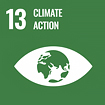
Take action on climate change and its impacts
Through its multiple programs related to climate change and climate resilience, Crown-Indigenous Relations and Northern Affairs Canada (CIRNAC) is contributing to Goal 13. Funding is provided to support northern communities, governments, and organizations to plan and construct renewable energy and energy efficiency projects. The implementation of adaptation measures will lead to increased resilience and support the ultimate outcome that Indigenous and northern communities strengthen their capacity to adapt to changing environments.
Implementation strategies supporting the goal but not a specific Federal Sustainable Departmental Strategy (FSDS) target
Implementation strategy: Strengthen Indigenous leadership on climate action
Departmental action: Indigenous Climate Leadership Agenda
Working alongside Indigenous partners of all distinctions to advance an Indigenous Climate Leadership (ICL) Agenda, including distinctions-based strategies, that builds regional and national capacity and progressively vests authorities and resources for climate action in the hands of First Nations, Inuit, and Métis peoples and representative organizations.
- Performance indicator: Number of distinctions-based co-developed ICL roadmaps established.
- Starting point: 0
- Target: 3 by March 2025 (1 for each First Nation, Inuit and Métis)
How the departmental action contributes to the FSDS goal and target and, where applicable, to Canada's 2030 Agenda National Strategy and Sustainable Development Goals (SDGs):
By advancing an ICL Agenda, CIRNAC and Environment and Climate Change Canada will transform ways in which Indigenous Peoples access climate funding opportunities by reducing barriers and improving equitable access to funding processes. This work is aligned with the goals and vision of the United Nations Declaration on the Rights of Indigenous Peoples and will work towards supporting self-determined Indigenous climate action.
- Associated Canadian Indicator Framework (CIF) targets or ambitions and/or Global Indicator Framework (GIF) targets:
- CIF Ambition 13.3: Canadians are well equipped and resilient to face the effects of climate change.
- UN SDG 13: Climate Action.
Implementation strategy: Support climate change adaptation across Canada
Departmental action: Climate Change Preparedness in the North Program
Supports community driven projects that allow northern and Indigenous communities in northern Canada to take action on climate change. Eligible projects include: climate change risk assessments; development of hazard maps and adaptation plans; development of adaptation options; and the implementation of structural and non-structural adaptation measures.
- Performance indicator: Number of funded projects implementing adaptive measures.
- Starting point: 106 (2021)
- Target: 202 by March 2025
How the departmental action contributes to the FSDS goal and target and, where applicable, to Canada's 2030 Agenda National Strategy and Sustainable Development Goals (SDGs):
By supporting community-driven climate adaptation actions, Climate Change Preparedness in the North is helping Indigenous and northern communities build climate resiliency through self- determined adaptation projects. This work is aligned with the Canadian Indicator Framework ambition of being well-equipped and resilient to face the effects of climate change as well as SDG 13 by directly supporting climate action by helping to strengthen resilience and adaptive capacity to climate-related hazards, building regional and local capacity, and improving impact reduction.
- Associated Canadian Indicator Framework (CIF) targets or ambitions and/or Global Indicator Framework (GIF) targets:
- CIF Ambition 13.2: Canadians are well-equipped and resilient to face the effects of climate change.
- UN SDG 13: Climate Action.
Departmental action: First Nation Adapt Program
Supports community driven projects that allow First Nations south of the 60th parallel to take action on climate change. Eligible projects include: climate change risk assessments; integration of climate change risks into community planning documents; identification of adaptation measures to reduce climate change impacts; collection of Indigenous Knowledge regarding community-based local knowledge of past climate events and trends; floodplain mapping to assess current and future projected flood risks to community infrastructure.
- Performance indicator: Number of risk and adaptation assessments completed
- Starting point: 167 (2021)
- Target: 362 by March 2028
How the departmental action contributes to the FSDS goal and target and, where applicable, to Canada's 2030 Agenda National Strategy and Sustainable Development Goals (SDGs):
Through supporting First Nation community driven projects, the First Nation Adapt program helps enable First Nations south of the 60th parallel in taking self-determined climate actions within their traditional territories. This work is aligned with the ambitions set out in the Canadian Indicator Framework's Goal 13 as well as SDG 13 by directly supporting community-led and driven climate actions that support First Nations in building a safe, sustainable, and resilient future.
- Associated Canadian Indicator Framework (CIF) targets or ambitions and/or Global Indicator Framework (GIF) targets:
- CIF Ambition 13.2: Canadians are well-equipped and resilient to face the effects of climate change.
- UN SDG 13: Climate Action.
Departmental action: Indigenous Community-Based Climate Monitoring Program
Supporting Indigenous Peoples in monitoring climate and climate change impacts for use in decision-making using both Indigenous Knowledge and science. Supported projects may include: training and hiring of community members; developing monitoring plans; monitoring key climate indicators; assessing and managing data; communicating results; networking and community engagement.
- Performance indicator: Number of communities that participated in community-based climate monitoring (cumulative).
- Starting point: 173 (2022)
- Target: 224 by March 2028
How the departmental action contributes to the FSDS goal and target and, where applicable, to Canada's 2030 Agenda National Strategy and Sustainable Development Goals (SDGs):
By working with Indigenous Peoples across Canada to monitor climate and climate change impacts, the Indigenous Community-based Climate Monitoring program is supporting Indigenous communities, groups, and governments in gathering data that help them to make informed decisions by using a blend of Indigenous Knowledge and science. This work directly supports progress towards SDG 13 by improving awareness, building capacity, and strengthening the resilience of Indigenous communities.
- Associated Canadian Indicator Framework (CIF) targets or ambitions and/or Global Indicator Framework (GIF) targets:
- CIF Ambition 13.2: Canadians are well-equipped and resilient to face the effects of climate change.
- UN SDG 13: Climate Action.
Initiatives advancing Canada's implementation of SDG 13 – Climate Action
The following initiatives demonstrate how Crown-Indigenous Relations and Northern Affairs Canada (CIRNAC) programming supports the 2030 Agenda and the Sustainable Development Goals (SDGs), supplementing the information outlined above.
Planned initiative: Indigenous Climate Leadership Agenda
Relevant targets or ambitions
Associated Canadian Indicator Framework (CIF) targets or ambitions and/or Global Indicator Framework (GIF) targets:
- CIF Goal 13 Take urgent action to combat climate change and its impacts.
- CIF Ambition 13: Canadians are well-equipped and resilient to face the effects of climate change.
- GIF Target 13.2: Integrate climate change measures into national policies, strategies and planning.
- GIF Target 13.3: Improve education, awareness-raising and human and institutional capacity on climate change mitigation, adaptation, impact reduction and early warning.
Planned initiative: Climate Change Preparedness in the North Program
Relevant targets or ambitions
Associated Canadian Indicator Framework (CIF) targets or ambitions and/or Global Indicator Framework (GIF) targets:
- CIF Goal 13: Take urgent action to combat climate change and its impacts.
- CIF Ambition 13: Canadians are well-equipped and resilient to face the effects of climate change.
- GIF Target 13.1: Strengthen resilience and adaptive capacity to climate-related hazards and natural disasters in all countries.
- GIF Target 13.2: Integrate climate change measures into national policies, strategies and planning.
- GIF Target 13.3: Improve education, awareness-raising and human and institutional capacity on climate change mitigation, adaptation, impact reduction and early warning.
Planned initiative: First Nation Adapt Program
Relevant targets or ambitions
Associated Canadian Indicator Framework (CIF) targets or ambitions and/or Global Indicator Framework (GIF) targets:
- CIF Goal 13: Take urgent action to combat climate change and its impacts.
- CIF Ambition 13: Canadians are well-equipped and resilient to face the effects of climate change.
- GIF Target 13.1: Strengthen resilience and adaptive capacity to climate-related hazards and natural disasters in all countries.
- GIF Target 13.2: Integrate climate change measures into national policies, strategies and planning.
- GIF Target 13.3: Improve education, awareness-raising and human and institutional capacity on climate change mitigation, adaptation, impact reduction and early warning.
Planned initiative: Indigenous Community-based Climate Monitoring Program
Relevant targets or ambitions
Associated Canadian Indicator Framework (CIF) targets or ambitions and/or Global Indicator Framework (GIF) targets:
- CIF Goal 13: Take urgent action to combat climate change and its impacts.
- CIF Ambition 13: Canadians are well-equipped and resilient to face the effects of climate change.
- GIF Target 13.1: Strengthen resilience and adaptive capacity to climate-related hazards and natural disasters in all countries.
- GIF Target 13.3: Improve education, awareness-raising and human and institutional capacity on climate change mitigation, adaptation, impact reduction and early warning.
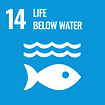
Conserve and protect Canada's oceans
Crown-Indigenous Relations and Northern Affairs Canada (CIRNAC) contributes to Goal 14 by ensuring marine conservation through funding for scientific researchers and Inuit organization to improve monitoring studies and overall conservation and spatial planning.
Implementation strategies supporting the goal but not a specific Federal Sustainable Departmental Strategy (FSDS) target
Implementation strategy: Marine conservation and spatial planning are informed by science, Indigenous Knowledge, monitoring and stakeholder input
Departmental action: Marine Conservation Targets Initiative
- Performance indicator: Percentage of research, harvest and monitoring marine studies that will serve to inform conservation and spatial planning.
- Starting point: 0 percent
- Target: 100 percent by 2026 (program ends in 2026)
How the departmental action contributes to the FSDS goal and target and, where applicable, to Canada's 2030 Agenda National Strategy and Sustainable Development Goals (SDGs):
The Marine Conservation Targets Initiative goal is to ensure Canada meets the goal to conserve 25 percent of our lands and waters by 2025, and 30 percent of each by 2030. The Minister of Fisheries, Oceans and the Canadian Coast Guard and the Minister of Environment and Climate Change have the lead on this initiative.
Initiatives advancing Canada's implementation of SDG 14 – Life Below Water
The following initiatives demonstrate how Crown-Indigenous Relations and Northern Affairs Canada (CIRNAC) programming supports the 2030 Agenda and the Sustainable Development goals (SDGs), supplementing the information outlined above.
Planned initiative: Marine Conservation Targets Initiative - Marine Studies
CIRNAC provides funding to academia, federal researchers and Inuit organizations for science, Indigenous Knowledge, monitoring to inform marine conservation and spatial planning.
Relevant targets or ambitions
The Marine Conservation Targets Initiative goal is to ensure Canada meets the goal to conserve 25 percent of our lands and waters by 2025, and 30 percent of each by 2030. The Minister of Fisheries, Oceans and the Canadian Coast Guard and the Minister of Environment and Climate Change have the lead on this initiative.
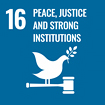
Promote a fair and accessible justice system, enforce environmental laws , and manage impacts
Crown-Indigenous Relations and Northern Affairs Canada (CIRNAC) contributes to the Goal 16 by administering funding for the implementation of the Truth and Reconciliation Commission's Calls to Actions 72-76. The program funding supports Indigenous community-led initiatives to locate, document, commemorate, and memorialize unmarked burial sites associated with the 140 residential schools. Ultimately, this program aims to advance the departmental goal of recognizing and resolving past injustices.
The implementation of the United Nations Declaration on the Rights of Indigenous Peoples by CIRNAC advances Indigenous rights, including those recognized and affirmed under section 35 of the Constitution Act (1982) and described in the United Nations Declaration on the Rights of Indigenous Peoples.
Initiatives advancing Canada's implementation of SDG 16 – Peace, Justice and Strong Institutions
The following initiatives demonstrate how CIRNAC programming supports the 2030 Agenda and the Sustainable Development Goals (SDGs), supplementing the information outlined above.
Planned initiative: Implementation of Calls to Action 72 – 76
The Resolution and Partnerships Sector administers funding for implementation of Calls to Action 72 - 76, for initiatives through to 2026-27. Regarding Missing Children and Burial Information, the department will continue to collaborate with the National Centre for Truth and Reconciliation (NCTR) to update and maintain the National Residential School Student Death Register (Call to Action 72) and support the NCTR in developing and maintaining a registry of residential school cemeteries (Call to Action 73).
This ongoing work will increase the information available to families and Survivors on student deaths and burial places; accelerate the progress made to fill gaps in data collected to date; and improve access to information on missing or deceased family members. Additional planned funding to the NCTR, upon completion of an agreed-upon work plan, to flow Year one of a four-year funding commitment to provide stable, predictable funding and a one-time contribution of $59.7 million towards the overall construction costs of a new building.
In support of Calls to Action 74-76, the department will continue to support funding initiatives to locate, document, commemorate, and memorialize unmarked burial sites associated with former residential schools, as well as honour families' wishes to bring children's remains home, through the Residential Schools Missing Children – Community Support Fund. The department recently expanded eligibility of community support funding to include five non-Indian Residential Schools Settlement Agreement residential schools included in the Newfoundland and Labrador Residential Schools Settlement Agreement. The department will continue to co-administer the National Advisory Committee on Missing Children and Unmarked burials, which will provide advice and guidance to Indigenous partners.
The department will also lead a horizontal initiative involving six federal departments and agencies to address the ongoing impacts of the residential schools system and commemorate their history and legacy. The appointment of the Independent Special Interlocutor for Missing Children and Unmarked Graves and Burial Sites associated with Indian Residential Schools is part of the whole-of-government approach. At the end of her two-year mandate, the Special Interlocutor will present final recommendations for a new federal legal framework to identify, protect and preserve unmarked graves and burial sites connected to former residential schools. Those recommendations will inform the appropriate actions to be taken by the Government of Canada towards the implementation of a new federal legal framework and new needed initiatives and measures over and above those currently presented in the Horizontal Initiative.
Relevant targets or ambitions
- Extending funding and support to the National Centre for Truth and Reconciliation to update and maintain the National Residential School Student Death Register (Call to Action 72) and in developing and maintaining a registry of residential school cemeteries (Call to Action73)
- Expanding and extending access to the Community Support Funding program to support Indigenous communities and organizations.
- Providing stable, predictable, and long-term funding support to the National Centre for Truth and Reconciliation and making a significant contribution to the overall construction costs of a new building for the Centre.
- The National Advisory Committee will provide expertise to Indigenous communities and organizations to support their search efforts.
- The Horizontal Framework ensures visibility and a coordinated whole-of-government approach to addressing the legacy of residential schools.
Associated Canadian Indicator Framework (CIF) targets or ambitions and/or Global Indicator Framework (GIF) targets
- GIF Target 16.b: Promote and enforce non-discriminatory laws and policies for sustainable development.
- GIF Target 16.3: Promote the rule of law at the national and international levels and ensure equal access to justice for all.
Planned initiative: Implement the United Nations Declaration on the Rights of Indigenous Peoples
The United Nations Declaration on the Rights of Indigenous Peoples Act came into force on June 21, 2021. The United Nations Declaration on the Rights of Indigenous Peoples Act affirms the United Nations Declaration as a universal international human rights instrument with application in Canadian law and provides a lasting framework to advance the implementation of the United Nations Declaration at the federal level.
A key commitment of the United Nations Declaration on the Rights of Indigenous Peoples Act was met when the Action Plan developed by the Government of Canada, in consultation and collaboration with Indigenous Peoples, was released on June 21, 2023.
Implementation of that plan will include 10 measures supported by Crown-Indigenous Relations and Northern Affairs Canada (CIRNAC) that contribute directly to this goal, such as, combatting gender-based violence; strengthening Indigenous Peoples' participation in decision-making; and establishing credible institutions.
This United Nations Declaration on the Rights of Indigenous Peoples Act and the ongoing dialogue it promotes, create a framework for reconciliation and stronger relationships with Indigenous Peoples stemming from the principles of justice, democracy, respect for human rights, non-discrimination and good faith.
Relevant targets or ambitions
Associated Canadian Indicator Framework (CIF) targets or ambitions and/or Global Indicator Framework (GIF) targets
- CIF Ambition 16.5: Canadians have equal access to justice.
- CIF Ambition 16.7: Canadians are supported by effective, accountable, and transparent institutions.
- GIF Target 16.1: Significantly reduce all forms of violence and related death rates everywhere.
- GIF Target 16.6: Develop effective, accountable and transparent institutions at all levels.
- GIF Target 16.b: Promote and enforce non-discriminatory laws and policies for sustainable development.
- GIF Target 16.7: Ensure responsive, inclusive, participatory and representative decision-making at all levels.
Section 5: Integrating Sustainable Development
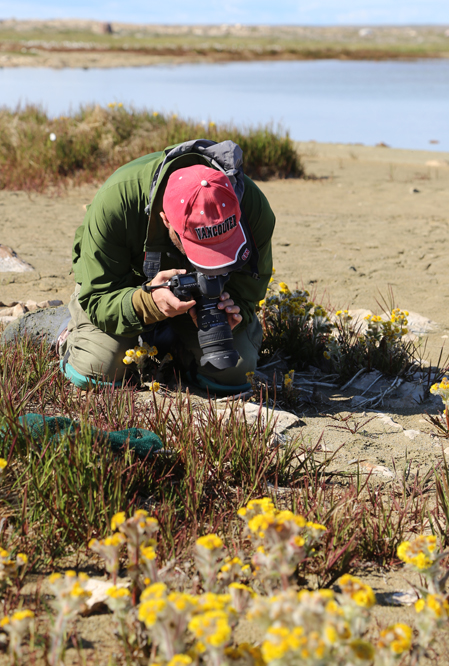
As part of Crown-Indigenous Relations and Northern Affairs Canada's (CIRNAC) effort to contribute to Canada's Federal Sustainable Development Strategy (FSDS), the department has established goals and targets and is identifying actions to support sustainable development priorities, which have been identified on national and international levels. Part of this effort includes CIRNAC's consideration of sustainable development and environmental risks in the development of policies, programs, plans and reports. The commitments made in this strategy align with the Departmental Plan and will be aligned to the upcoming Departmental Results Report and Program Information Profiles.
CIRNAC will continue to ensure that its decision-making process includes consideration of FSDS goals and targets through its Strategic Environmental Assessment (SEA) process. A policy, plan or program proposal will include an analysis of the impacts of the given proposal on the environment, including on relevant FSDS goals and targets.
Public statements on the results of CIRNAC's assessments are made public when an initiative has undergone a detailed SEA. The purpose of the public statement is to demonstrate that the environmental effects, including the impacts on achieving the FSDS goals and targets, of the approved policy, plan or program have been considered during proposal development and decision making.